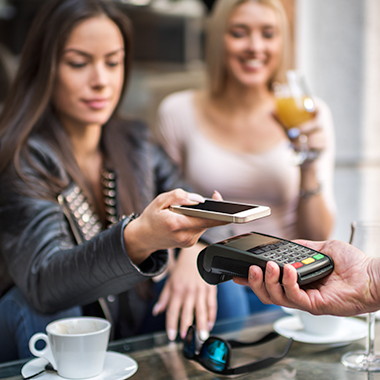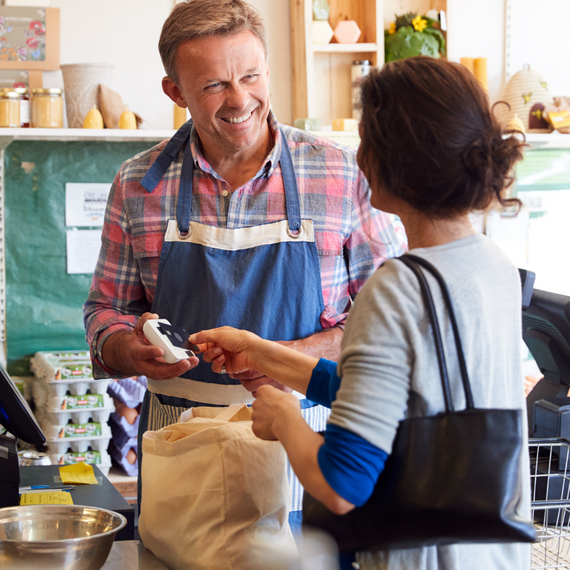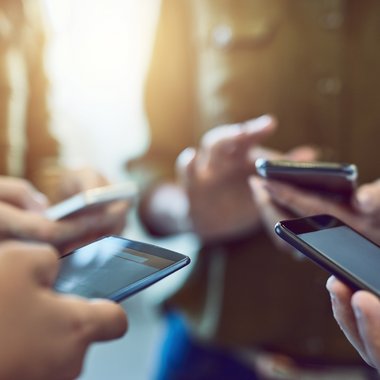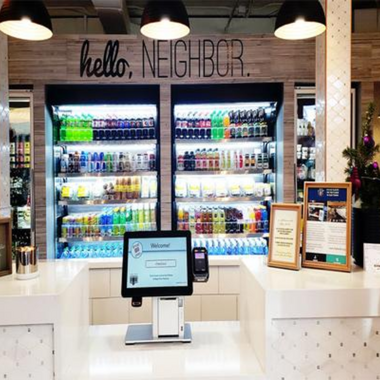
- Five minutes read
LiT: Is COVID-19 a catalyst for US contactless adoption?
As part of our Lost in Transaction: The impact of COVID-19 on consumer payment trends article series, we asked US consumers whether the pandemic had changed their attitude to contactless payments.
The US payments landscape has faced many hurdles when it comes to contactless adoption. Growth of contactless in the US has been slowed for various reasons, but is expected to rise in 2020 considering an unprecedented economic environment, as well as the roll out of more contactless cards, massive proliferation of contactless-capable POS devices, growth of mobile wallets such as Apple Pay, and launch of large scale new use cases like New York’s latest contactless subway fare payment project.
Educating the public on the type of payment methods available and addressing concerns are key steps in getting consumers to jump on board. Similarly, merchants should consider the following trends when introducing alternative payments:
The impact of COVID-19 will cause a huge surge in contactless
Amidst the global pandemic, everyday items, including cash have been revealed as carrying a high number of germs. Our latest data reveals that 55% of US consumers were concerned about handling cash as it can be a vehicle to transit disease. Chip and pin machines are equally, if not more, unhygienic. Understandably, consumers who haven’t already done so are turning to contactless payment options like smartwatches, mobile phones and contactless debit and credit cards as a way to avoid spreading or receiving the virus. In the past month, 50% of US consumers reported paying by contactless at least four times, with 69% agreeing contactless payments were more convenient than cash.
In response to the global outbreak, payment card networks like Visa and MasterCard have increased spending limits in various markets to allow larger tap and go transactions and encourage the transition to contactless. In the US, several merchants and retailers have already begun implementing contactless payments such as in restaurants (Taco Bell) and grocery stores (Publix). In fact, many point of sale (POS) stores are encouraging customers to use contactless as much as possible to reduce the virus’ spread.
The opportunity for contactless is also indicated in the New York City subway’s June 2019 announcement of introducing OMNY to passengers, a new contactless fare payment system accessible via contactless card and smartphone. While project developments like OMNY may now be decelerated following the onset of COVID-19, merchants in the US should still consider the potential for consumer payment trends to evolve once retail shopping is re-established.
With the current contactless payment options available in the country, 60% of US respondents said using contactless during the pandemic has made them more comfortable with the idea of using the payment method in the future. The sentiment may very well trigger a domino effect on contactless adoption in the US.
Data suggests the surge in contactless won’t be temporary, especially for mobile wallets
Our LiT data suggests that the people adopting mobile technology (84%) overwhelmingly prefer it over cash. A further 77% also agreed that mobile wallets were more convenient than contactless, with 85% predicting they will be using mobile wallets to make payments in two years’ time.
Making it even simpler to pay for goods and services are proprietary apps like Skrill, Apple Pay and Amazon Go. These apps provide consumers with several choices to complete contactless payments. Take Amazon Go stores , which opened their first frictionless convenience store in January 2018. Since then, 25 Amazon Go locations have opened across the US, which are powered by Amazon’s proprietary ‘Just Walk Out’ technology, allowing customers to walk into a store using a unique QR code, shop, and walk out without having to go through the traditional cash checkout process. Just last month, Amazon announced that the advanced cashier-less technology would be available for sale to other retailers.
Aligning with that thought is the adoption of biometric payment authentication as a preferred verification method for mobile payments. A challenge to biometric adoption, highlighted in our latest findings, is theft, where 55% of US consumers reported being cautious about mobile wallets due to potentially getting their phone stolen. Despite this, 44% said that mobile wallets were more secure than cash because of biometric authentication. Our LiT research report: ‘The end of risk” also revealed that 61% of consumers believed biometrics to be a more quicker and efficient way of paying for goods or services compared to traditional methods.
As evidenced, the combination of mobile technology’s growth and repeat usage could cause these frictionless apps to be further normalized and appealing among US consumers. Consumers may even refuse to shop where contactless payments aren’t accepted, either because of a new preference for contactless payments or because of public health concerns.
5G networks will accelerate the adoption of alternative payment methods
The fifth generation (5G) of wireless communications for mobile data networks may just transform the future of payments. Through 5G networks, meaning the expansion of when, where and how you pay, digital payment methods like mobile wallets could experience even more use cases and be preferred over traditional methods like cash.
Eliminating connection issues and other potential errors in the transaction process, 5G will deliver faster uploads and downloads, effectively decreasing the time between payment and payment confirmation of each consumer transaction made for both digital and retail payments.
With the anticipated speed boost, consumers will be presented with more convenience as 5G and biometrics merge to impact the buyer’s checkout journey by accepting payments by voice, gesture or other via wearable technology like smartwatches. According to our research, smartwatch penetration is low, yet 51% of smartwatch users in the US have used their watch to make payments.
Overall, 57% of US consumers acknowledged that using contactless during COVID-19 has made them more comfortable with the idea of a cashless society. As connectivity improves and product and infrastructural groundwork evolves in the US, consumers can look to contactless for a new and improved user experience.
All new data referenced is taken from our latest consumer research Lost in Transaction: The impact of COVID-19 on consumer payment trends. To compile this data Paysafe and Sapio Research surveyed 8,000 consumers across the US, UK, Canada, Bulgaria, Italy, Austria, and Germany between 8-15 April 2020.
The key takeaways from the research are available here.




